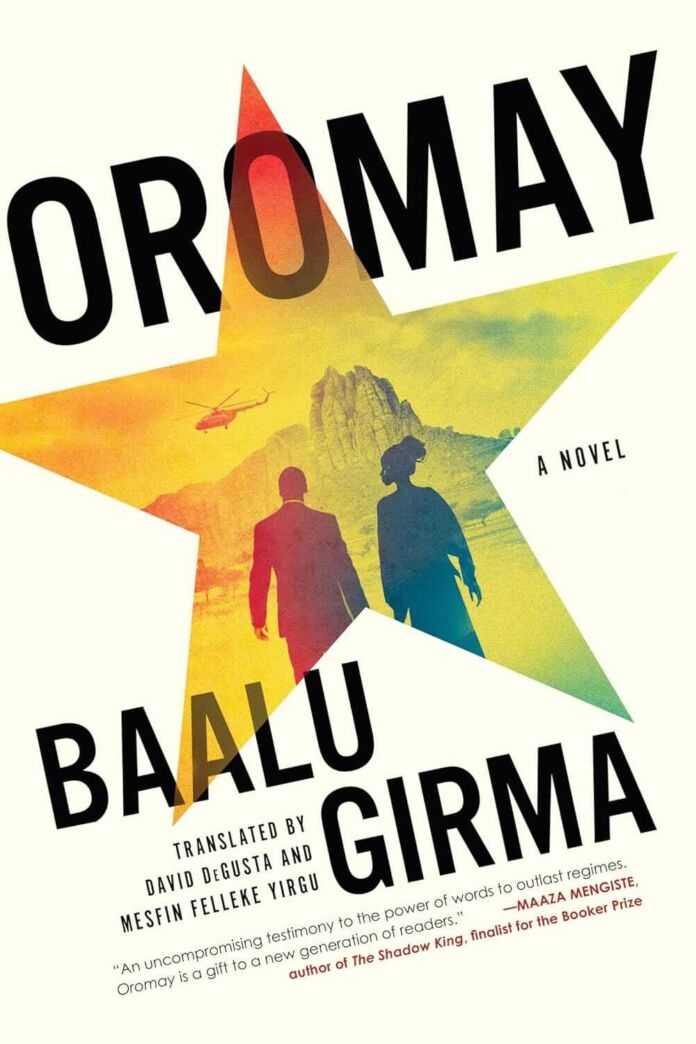In the landscape of African literature, few novels have achieved the legendary status of Oromay by Baalu Girma. Published in Ethiopia in 1983, Baalu Girma’s masterpiece caused such a stir that it was banned within days, and the author disappeared six months later—presumably murdered by the very regime he dared to criticize. Now, forty years later, this powerful work finally reaches English readers through a masterful translation by David DeGusta and Mesfin Felleke Yirgu.
The Story: Where Personal and Political Collide
Set against the backdrop of Ethiopia’s 1981-82 Red Star Campaign to quell the Eritrean insurgency, Oromay follows Tsegaye Hailemaryam, a state journalist tasked with heading propaganda efforts in Asmara. What begins as a seemingly straightforward assignment evolves into a complex web of love, loyalty, and betrayal that challenges everything Tsegaye believes about both his country and himself.
Writing Style and Narrative Structure
Girma’s prose is remarkable for its ability to shift seamlessly between intimate personal moments and sweeping political drama. His writing style combines journalistic precision with poetic flourishes, creating a narrative voice that feels both immediate and timeless. The author demonstrates particular skill in using weather and landscape as metaphors for the political climate:
The palm fronds sway in the wind, their sound a dirge:
“A mother’s children
Driven apart by
Misunderstandings and mistakes
The peacekeepers are gone
only madmen remain”
The novel is structured in five parts, each building tension while peeling back layers of deception. Girma employs multiple perspectives, though primarily following Tsegaye, and occasionally breaks the fourth wall with an omniscient narrator who identifies as “the author.” This technique, while potentially jarring in less skilled hands, adds depth to the story’s exploration of truth and perspective.
Character Development and Relationships
Tsegaye Hailemaryam
The protagonist’s journey from confident government propagandist to disillusioned witness of war’s horrors is masterfully rendered. His character development feels organic, driven by both external events and internal conflicts, particularly in his relationships with:
- Roman Hiletework: His fiancée in Addis Ababa, representing stability and tradition
- Fiammetta Gilay: The captivating Asmara woman who challenges his worldview
- Colonel Wolday: A childhood friend whose fate becomes entwined with larger themes of loyalty and sacrifice
Supporting Characters
The novel’s secondary characters are equally well-drawn, from the manipulative Silay Berahi to the complex Director Betru Tessema. Each brings their own motivations and secrets to the story, creating a rich tapestry of human nature under pressure.
Themes and Symbolism
Love and Betrayal
The central romance between Tsegaye and Fiammetta serves as a microcosm for the larger political conflicts. Their relationship highlights how personal and political betrayals mirror each other, while questioning whether true loyalty is possible in a world of shifting allegiances.
Truth and Propaganda
Girma’s background in journalism shines through in his exploration of truth versus narrative. The novel constantly questions who controls the story and how “facts” can be manipulated for political ends.
Identity and Belonging
Through its exploration of the Eritrean conflict, the novel delves deep into questions of national and personal identity. Characters struggle with competing loyalties to region, nation, ideology, and personal relationships.
Historical Context and Relevance
While firmly rooted in 1980s Ethiopia, Oromay by Baalu Girma resonates with contemporary readers through its exploration of universal themes. The novel’s depiction of government propaganda and media manipulation feels particularly relevant in our era of “fake news” and information warfare.
Critical Analysis
Strengths
- Masterful integration of personal and political narratives
- Complex, believable characters
- Rich atmospheric detail of Asmara
- Nuanced exploration of war’s moral complexities
- Sophisticated use of multiple narrative techniques
Areas for Improvement
- The omniscient narrator device occasionally breaks immersion
- Some political discussions can feel didactic
- Certain minor characters could be more fully developed
- The pacing in the middle section occasionally lags
Translation Quality
DeGusta and Yirgu deserve high praise for their translation work. They successfully capture both the lyricism of Girma’s prose and the complexity of his political discourse, while maintaining readability for English-speaking audiences. Their careful handling of Amharic and Italian phrases adds authenticity without confusion.
Impact and Legacy
The tragic circumstances surrounding Oromay‘s publication and Baalu Girma’s subsequent disappearance have certainly contributed to its legendary status in Ethiopian literature. However, the novel’s enduring power comes from its artistic merit rather than its historical significance. It stands as both a crucial document of its time and a timeless exploration of human nature under pressure.
Comparison to Other Works
Oromay by Baalu Girma can be productively compared to other political thrillers like Graham Greene’s The Quiet American or John le Carré’s The Constant Gardener. However, its unique perspective on African politics and its integration of local literary traditions set it apart from Western examples of the genre.
Final Verdict
Oromay by Baalu Girma deserves its reputation as Ethiopia’s greatest novel. Despite some minor flaws, it succeeds brilliantly as both a political thriller and a profound meditation on love, loyalty, and truth. The English translation finally allows a wider audience to appreciate this masterpiece of African literature.
Recommended for:
- Readers interested in African literature and history
- Fans of political thrillers
- Those who enjoy complex character studies
- Anyone interested in the intersection of personal and political narratives
This landmark translation of Oromay by Baalu Girma not only preserves an important piece of Ethiopian literary history but also introduces English readers to a powerful voice in world literature. Baalu Girma’s final novel stands as both a testament to his courage and a tribute to his artistic vision.





